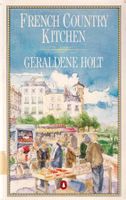Advertisement
Preparation info
- Difficulty
Medium
Appears in
Published 1987
Confit d’oie is one of those legendary preparations of French country cooking which has been made for centuries. Pieces of goose or duck preserved in fat still play a considerable role in much of the cooking of south-west France, most notably in cassoulet. As with several other foods that are still made as a matter of course in farmhouses, confit d’oie is expensive to buy, yet is simple and satisfying to make at home. I find the ideal time to preserve goose or duck in t


